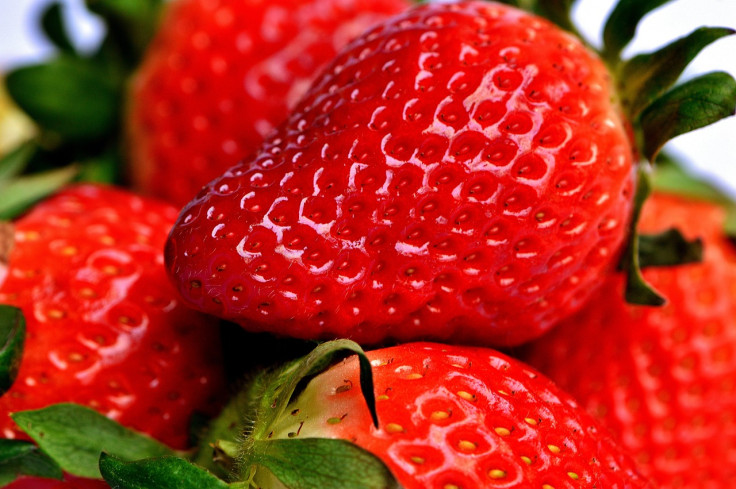What Makes Ripe Strawberries Red? Researchers Shed Light On The Fruit's 'Puzzle'
KEY POINTS
- Researchers were able to identify a new factor that regulates anthocyanins during ripening
- They found that strawberries without transcription factor protein FaMYB123 do not fully exhibit the color red
- FaMYB123 interacts with another transcription factor during ripening, they added
What makes strawberries turn red when they become ripe? Researchers have found an explanation behind the process.
Strawberries are well-known not for being delicious but also for being low in calories while also being high in vitamins and antioxidants.
"(T)hey have a pleasant taste and flavor, making strawberry one of the most widely appreciated fruits," the researchers of a study, which was published in The Plant Journal, wrote. "These types of compounds have been related to the promotion of human health and also to the prevention of degenerative and metabolic diseases."
Among strawberries' most iconic features is their bright red hue when ripe. Apart from making the fruits appetizing to look at, the red hue has another purpose: It attracts predators that would eat the fruits and spread its seeds.
But what is it that triggers strawberries to turn red during the ripening process?
The researchers had been studying strawberry ripening for years, the University of Cordoba (UCO) explained. And in their new work, they were able to identify a new factor that regulates anthocyanins — the pigments behind strawberries' red hue — during ripening.
This transcription factor protein, according to them, is FaMYB123.
When they repressed its expression in a strawberry plant, the anthocyanins were also repressed in it compared to a regular one. The altered strawberry "did not exhibit all of its red color," the UCO noted.
"Based on gene expression and metabolomic data for transgenic receptacles, FaMYB123 specifically regulates the late steps of the flavonoid pathway, that is, the production of pelargonidin-3-glucose, cyanidin-3-glucose and their malonyl derivatives pelargonidin 3-(6″-malonylglucoside) and cyanidin 3-(6″'-malonylglucoside) — which are the most abundant anthocyanins in ripe strawberry receptacles and key contributors to strawberry color," the researchers wrote.
But FaMYB123 doesn't do all the work itself, as the researchers found that it interacts with another flavanoid-related transcription factor, FabHLH3, which has previously been known to also be related to strawberries' color during the ripening process.
Overall, this shows the complexity of the seemingly simple process of strawberries turning red, providing an interesting glimpse into the ripening processes behind this famous fruit.
Understanding it better, according to the UCO, could be crucial for countries like Spain that have strawberries as one of their main products.
"Further work will be required to complete this puzzle in strawberry fruits," the researchers said further.

© Copyright IBTimes 2025. All rights reserved.





















